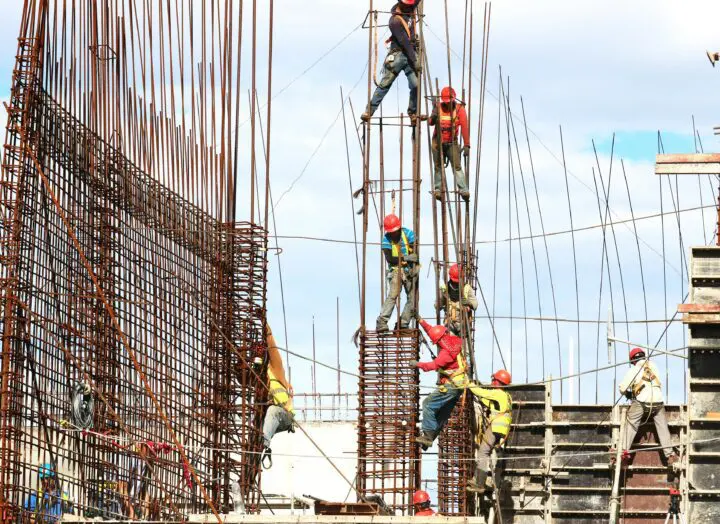Project Documentation: To Write or Not To Write
In suits alleging negligence in the performance of professional services, well‑drafted documents and well‑kept, comprehensive records are the strongest defensive weapons available to professionals.
Text
In suits alleging negligence in the performance of professional services, well-drafted documents and well-kept, comprehensive records are the strongest defensive weapons available to professionals. The following practices and procedures can be vital to a firm’s continued profitability in the face of costly litigation.
Planning phase
- Put all agreements for the performance of services in writing, and state with particularity the scope of services, fees to be charged, each party’s responsibility to the other, and any responsibilities assumed by either party toward any person not a party to the contract for services. This includes creating written contractual arrangements with sub consultants. It is surprising how often design professionals enter into loose oral arrangements with professional consultants and subcontractors. The architect, engineer or other prime professional is still responsible to the client for the services provided by these consultants, but the professional’s responsibilities to each other are unclear and probably unenforceable.
- Avoid any statement that can imply that you have responsibility for the work of any entity that contracts directly with the client, and whose data and reports the client is obliged to supply you. Do not accept or pay for reports which should be addressed to and paid for by the owner. Write nothing indicating that such a person is your agent in the performance of their services or that you have any control or supervision over the owner’s other consultants.
- Write nothing that implies that you have the right to hire, supervise or discharge an on-site representative whom the owner pays unless you are obligated by contract to employ such a person at your own expense.
- Recognize that the courts treat all specifications emanating from your office to have been written by you, just as if you had set down and written them all from “scratch.” Therefore, when issuing specifications, do not assemble under one cover the appropriate specifications with large masses of inappropriate forms. Careless use of form specifications may someday put you in the embarrassing position of explaining to a jury why the contractor should have adhered to the letter of certain specifications while no one expected the contractor to pay any attention to certain others. Be sure to issue only appropriate, self-explanatory specifications. Remember that, as the “author” of these documents, any ambiguity will be construed against you in court.
- Do not casually specify untested materials and methods. Request in writing the representations, guarantees, and warranties of any manufacturer or vendor, and otherwise document your investigation and exercise of judgment in using them.
- Provide the client with the information needed by the client to allow a decision indicating informed consent. Present to the client in writing the advantages and disadvantages and estimated costs of each alternative, and obtain the client’s decision in writing.
- Document the client’s decision on bonds and insurance. If the client elects, for reasons of its own, not to require surety, to require only specific insurance coverages, or not to avail itself of any other safeguard, affirm the client’s election in writing.
- Document the transmittal of plans, revised plans, and project information to consultants.
- Notify the client in writing of any recognized increases in cost estimates and the reasons behind them, and obtain the client’s written agreement to proceed.
Construction phase
- Keep a record of all visits to the site. At a minimum, record the date, the time of day, and the work in progress. Good judgment might call for the recording of additional details. Thus, when asked what you did to protect the owner from deficiencies in the work of the contractor, you can speak in specifics rather than generalities. Usually, for lack of any evidence of error in design, plaintiffs will contend that the architect or engineer failed in a duty to supervise, inspect or test the work of the contractor, and therefore failed to observe its non-compliance with the plans and specifications. Be sure that the contract with the client clearly states the extent and limits of your construction-phase responsibilities, and that the client understands them at the project’s inception.
- Notify the owner and contractor in writing, with supporting detail, of your rejection of any work or materials when more than trivial cost is involved.
- Withdraw, in writing, any approval previously given of work thereafter rejected.
- Put in writing any recommendation which you make to the owner in a matter of serious consequence and obtain, if possible, the owner’s written response.
- Communicate in writing to the owner, your consultants, and the contractor any newly dis¬covered fact that might call for a change in the plans, specifications and cost.
- Put in writing your directions to the contractor concerning the performance or non-performance of work which is essential to substantial completion of the project when, in your opinion, the work or progress is not in compliance with the contract.
- Inform, in writing, the owner and any other person whose interests may be adversely affected (e.g., the surety company), of any serious untoward development.
Post-construction phase
- Invite, in writing, the participation of the owner in final inspections.
- Request, in writing, from each of your consultants written acknowledgment of payment in full for their services.
- Obtain the owner’s written acceptance of the work as substantially completed.
All phases
- Make a written memorandum of any telephone conversation and conference in which matters of more than passing importance are discussed, information imparted, or directions given.
- Confirm, in writing, decisions reached in the course of conversations and conferences.
- Remember when writing anything, that someday your writing may fall under the eyes of the hostile, or the ignorant, or the professionally knowledgeable, or a jury of nonprofessionals, or a judge who is a layperson. Technical language of an architect, engineer, or other design professional should leave no room for misinterpretation by any member of the same profession called upon to act upon it or explain it to a nonprofessional. Non-technical language should be clear to any reasonably intelligent layperson.
- Keep in good order only one set of relevant project information—including all contracts, plans, specifications, correspondence, reports, and memoranda—and follow a consistent policy for record management and storage. In most cases, it is wise to maintain records for at least as long as any applicable statute of repose.
Benefits
To have to “put it in writing” will cause you to stop and think. Thus, there will be tangible evidence of your thought and work in the event of any claim or controversy. By law, professionals are held to the only reasonable standard of care—the exercise of professional judgment in conformance with the standards of an ordinarily careful and capable practitioner facing similar situations. As long as this standard is met, the professional is not negligent, even if hindsight reveals that he or she made a mistake. In the event you are drawn into a lawsuit, those writings are likely to be admissible in evidence as proof of what was said and done, even when those who participated cannot remember, or seek to misrepresent the facts, or cannot be found, or have died.
Victor and CNA work with the AIA Trust to offer AIA members quality risk management coverage through the AIA Trust Professional Liability Insurance Program and Business Owners Program to address the challenges that architects face today and in the future.
More on Contracts & Professional Liability

Professional Liability Insurance Database
Professional Liability
Is Your Firm Eligible for a Premium Credit?
News ▪ January 2009
Straightforward Advice on Preserving Cash Flow
Professional Liability ▪ Retirement & Financial Planning ▪ Article